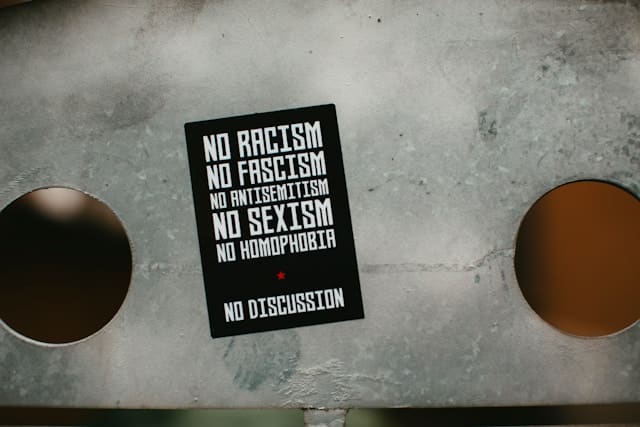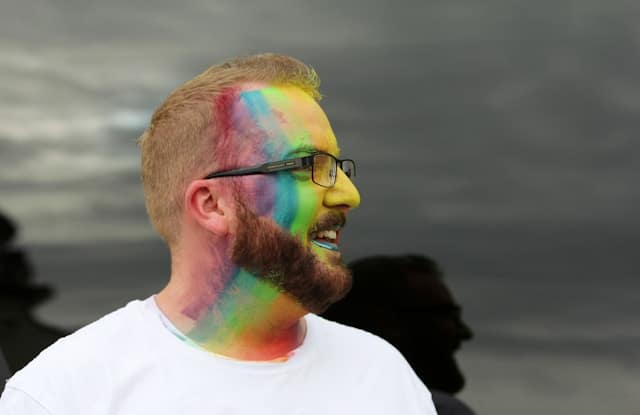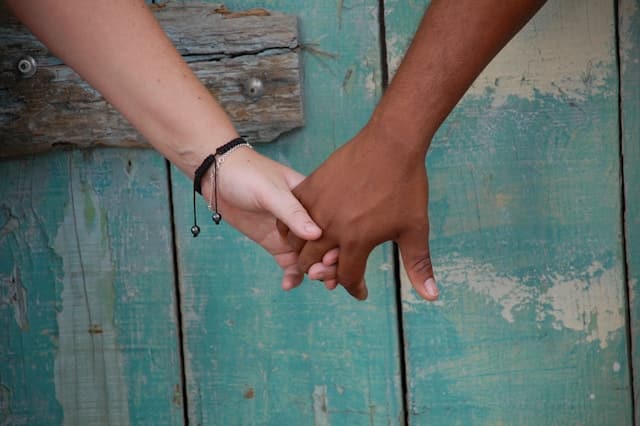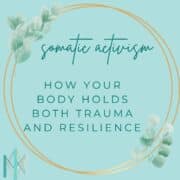
Your heart pounds as you join the crowd gathering to protect a neighbor from deportation. Your shoulders carry the weight of generations of struggle. Your breath quickens as sirens approach. Your feet know the rhythm of marching for justice, even if your mind feels overwhelmed by the complexity of the moment.
Your body is not just present at the protest—it is actively participating in social change. It holds the cellular memory of oppression and the embodied wisdom of resistance. It carries both the trauma of injustice and the resilience that makes liberation possible.
Somatic activism recognizes that social change isn’t just an intellectual or political process—it’s a deeply embodied one. Our bodies are both the sites where oppression gets inscribed and the vehicles through which we create transformation. Understanding this mind-body-spirit connection can revolutionize both how we heal from trauma and how we engage in creating a more just world.
The Body as a Site of Oppression
Before we can understand somatic activism, we need to recognize how systems of oppression literally live in our bodies. Trauma isn’t just psychological—it’s physiological, cellular, even genetic.
How Oppression Gets Embodied
Chronic Stress Response: Living under constant threat of discrimination keeps nervous systems in a state of hypervigilance. LGBTQ+ youth navigating hostile school environments, undocumented immigrants facing deportation threats, or Black Americans experiencing racial profiling all develop chronic stress responses that reshape their physiology.
Postural Adaptations: Bodies adapt to oppressive environments through protective postures. Shoulders may round inward to protect the heart. Jaws may clench against words that can’t be safely spoken. Breathing may become shallow to avoid taking up space.
Disconnection from Body Wisdom: Oppressive systems often require people to disconnect from their bodily intuition for survival. Learning to ignore signals of danger, discomfort, or desire becomes a survival strategy that can persist long after immediate threats pass.
Internalized Oppression: Negative messages about our bodies, identities, and worth get internalized as bodily shame. This might show up as self-harm, eating disorders, substance use, or simply a fundamental disconnection from the body as a source of wisdom and pleasure.
Intergenerational Trauma: Research on epigenetics shows that trauma can be passed down through generations at the cellular level. The bodies of descendants of enslaved people, Holocaust survivors, or indigenous genocide survivors may carry physiological imprints of their ancestors’ experiences.
The Physiology of Minority Stress
People from marginalized communities often experience what researchers call “minority stress”—the chronic stress of living in environments that are hostile to your identity. This stress manifests in the body through:
- Elevated cortisol levels leading to compromised immune function
- Chronic muscle tension from hypervigilance
- Disrupted sleep patterns affecting emotional regulation
- Digestive issues from chronic anxiety
- Cardiovascular strain from ongoing activation
- Disconnection from pleasure and joy as protective mechanisms
The Body as a Site of Resistance
While oppression gets inscribed in our bodies, our bodies are also powerful sites of resistance and healing. Somatic activism recognizes that liberation happens not just through policy change or consciousness-raising, but through reclaiming our embodied wholeness.
Embodied Resistance Throughout History
Sitting and Standing: From lunch counter sit-ins to Standing Rock, bodies taking up space where they’re not supposed to be creates powerful resistance. The simple act of remaining physically present in the face of violence or intimidation becomes a profound statement.
Dancing and Singing: Enslaved Africans preserved cultural identity and resistance through spirituals and movement. LGBTQ+ communities have used dance floors as spaces of liberation and self-expression. Indigenous communities maintain resistance through ceremonial practices that connect body, spirit, and land.
Collective Breathing: The synchronized breathing of meditation groups, the unified chants of protesters, and the shared breath of congregations create collective nervous system regulation that builds community resilience.
Embodied Boundaries: Learning to say no with your whole body, to set energetic boundaries, and to trust bodily intuition about safety becomes a form of resistance against systems that demand compliance and self-sacrifice.
The Nervous System of Social Change
Effective activism requires nervous system flexibility—the ability to move between states of activation and rest, between individual healing and collective action, between righteous anger and sustainable compassion. This is where somatic approaches become essential.
Window of Tolerance: Each person has a “window” where they can stay present with intensity without becoming overwhelmed (hyperaroused) or shutting down (hypoaroused). Somatic activism helps expand this window so we can stay present with difficult realities while maintaining capacity for effective action.
Co-regulation: When people come together with regulated nervous systems, they create collective resilience. The calm presence of experienced activists can help regulate newer participants, while the passionate energy of newcomers can inspire veterans.
Trauma-Informed Activism: Understanding how trauma affects the nervous system helps create movement spaces that are healing rather than re-traumatizing. This includes attention to consent, choice, transparency, and safety.
Somatic Approaches to Healing and Activism
Grounding and Embodiment Practices
Feel Your Feet: Before engaging in any activist activity, spend a moment feeling your feet on the ground. This simple practice activates the parasympathetic nervous system and helps you stay present rather than reactive.
Breath as Anchor: Your breath is always available as a tool for self-regulation. Lengthening exhales signals safety to your nervous system, while conscious breathing helps you stay connected to your values rather than reactive to circumstances.
Body Scanning: Regular body scans help you notice early signs of overwhelm, burnout, or trauma activation. This awareness allows you to make conscious choices about engagement rather than operating on autopilot.
Boundary Sensing: Practice noticing what feels like “yes” and “no” in your body. This somatic intelligence helps you make decisions about activist engagement that honor both your values and your well-being.
Movement as Medicine
Shaking and Tremoring: Many animals naturally shake after escaping predators to discharge survival energy. Humans can use intentional shaking or tremoring to release stored trauma and activation from the nervous system.
Dance and Expression: Free-form movement allows emotions to move through the body rather than getting stuck. Dance can be a form of celebration, grief processing, anger expression, or joy cultivation.
Walking Meditation: Simple walking, especially in nature, helps regulate the nervous system while creating space for processing and integration.
Martial Arts and Self-Defense: Practices that build physical confidence and capability can help heal from experiences of powerlessness while building embodied boundaries.
Breathwork for Resilience
Coherent Breathing: Breathing at a rate of about 5 breaths per minute creates heart rate variability that builds resilience and emotional regulation.
Breath of Fire: Rapid breathing techniques can help move stuck energy and emotions, though they should be used carefully and with proper guidance.
Collective Breathing: Breathing together in groups creates powerful bonding and shared regulation. This might happen in meditation circles, protest chants, or singing together.
Touch and Connection
Consensual Touch: Safe, consensual touch can be profoundly healing for those whose bodies have been violated or who have learned to associate touch with danger.
Massage and Bodywork: Professional bodywork can help release stored trauma while building positive associations with touch and body awareness.
Hugging and Holding: Simple practices like long hugs (with consent) can activate the vagus nerve and create feelings of safety and connection.
Trauma-Informed Social Justice
Creating truly liberatory movements requires understanding how trauma affects individuals and communities, and designing activism that heals rather than re-traumatizes.
Principles of Trauma-Informed Activism
- Safety First: Physical and emotional safety must be prioritized in all activist spaces. This includes everything from protest safety protocols to creating emotional safety in meetings and planning sessions.
- Choice and Consent: People must have genuine choice about their level of participation. Coercion, guilt, or shame have no place in liberatory movements.
- Trustworthiness: Transparent communication, consistent follow-through, and reliable leadership help create the trust necessary for healing and effective action.
- Cultural Humility: Recognizing that different communities have different relationships to trauma, healing, and resistance helps create inclusive movement spaces.
- Collaboration: Trauma often involves powerlessness, so healing-centered activism emphasizes shared power and collaborative decision-making.
Signs of Re-traumatizing Activism
Sometimes well-intentioned activist spaces can inadvertently re-traumatize participants. Warning signs include:
- Pressure to share personal trauma stories publicly
- All-or-nothing thinking that doesn’t allow for nuance or complexity
- Shaming people for having needs, boundaries, or limitations
- Prioritizing action over sustainability and well-being
- Replicating power dynamics that mirror oppressive systems
- Ignoring signs of burnout or trauma activation in participants
Building Healing-Centered Movements
- Start with Healing: Rather than seeing healing as separate from activism, recognize that healing work is activist work. Personal and collective liberation are interconnected.
- Honor Multiple Ways of Contributing: Not everyone can or should participate in the same ways. Some people contribute through direct action, others through research, art, caregiving, or financial support.
- Create Rituals and Ceremony: Marking beginnings and endings, celebrating victories, and grieving losses help movements stay connected to meaning and purpose.
- Practice Joy and Celebration: Oppressive systems rely on despair and hopelessness. Cultivating joy, pleasure, and celebration becomes an act of resistance.
- Plan for Sustainability: Building movements that can persist over time requires attention to rest, renewal, and preventing burnout.
Somatic Approaches to Specific Activist Challenges
Managing Overwhelm
When the scale of injustice feels overwhelming:
- Grounding practices help you stay present with what you can actually influence
- Boundary work helps you distinguish between your feelings and the feelings of others
- Nervous system regulation prevents compassion fatigue and emotional overwhelm
Dealing with Conflict
When movement spaces become conflicted:
- Somatic awareness helps you notice your own triggers and reactions
- Breathing practices help you stay present during difficult conversations
- Body-based boundaries help you engage constructively without taking on others’ emotions
Sustaining Long-term Engagement
For ongoing activist work:
- Rhythm and cycles honor the natural ebb and flow of energy
- Community care practices provide mutual support and accountability
- Embodied values work helps you stay connected to your “why” even when progress feels slow
Processing Grief and Loss
When facing ongoing injustice:
- Somatic grief practices help you feel and move through loss without getting stuck
- Collective mourning rituals create space for shared grief and support
- Embodied hope practices help you stay connected to possibility and vision
Integrating Somatic Awareness into Daily Activism
Before Activist Activities
- Check in with your body: What are you feeling? What do you need?
- Set intentions that honor both your values and your capacity
- Practice grounding techniques to help you stay present
- Identify support people and resources available during the activity
During Activist Activities
- Stay connected to your breath as an anchor
- Notice signs of overwhelm or activation and respond accordingly
- Use movement and stretching to discharge energy and tension
- Practice boundary-setting if situations become unsafe or overwhelming
After Activist Activities
- Allow time for decompression and integration
- Use movement, breathwork, or other somatic practices to discharge activation
- Connect with supportive community for processing and debriefing
- Practice gratitude for your body’s participation in creating change
Building Somatic Capacity for Social Change
Just as athletes train their bodies for physical challenges, activists can build somatic capacity for the challenges of social change work.
Daily Practices
- Morning Centering: Begin each day with practices that help you feel grounded and connected to your values.
- Embodied Intention-Setting: Rather than just thinking about your goals, feel them in your body. What does justice feel like? How does liberation live in your cells?
- Nervous System Check-ins: Regularly assess your level of activation and practice regulation techniques as needed.
- Evening Integration: End each day with practices that help you process and integrate your experiences.
Weekly Practices
- Movement for Expression: Engage in movement practices that help you express and discharge emotions.
- Community Connection: Spend time with others who share your values and can provide support and accountability.
- Nature Connection: Spend time in natural settings to restore your nervous system and gain perspective.
- Creative Expression: Use art, music, writing, or other creative practices to process your activist experiences.
Monthly Practices
- Somatic Therapy or Bodywork: Regular professional support for processing trauma and building resilience.
- Retreat and Restoration: Longer periods of rest and renewal to prevent burnout.
- Vision and Values Work: Regular connection to your larger vision and values to maintain motivation and direction.
- Community Assessment: Evaluation of your activist communities to ensure they’re supporting your healing and growth.
Finding Support for Somatic Activism
If you’re interested in integrating somatic approaches into your social justice work, consider looking for:
- Somatic Therapists who understand the intersection of personal healing and social change
- Body-Based Healers like massage therapists, acupuncturists, or movement therapists who share your values
- Activist Communities that prioritize healing and sustainability alongside action
- Training Programs in trauma-informed activism, somatics, or body-based approaches to social change
- Mentors and Teachers who embody the integration of healing and activism you want to develop
The Revolutionary Act of Embodied Healing
In a world that profits from our disconnection—from our bodies, from each other, from the earth—reclaiming embodied wholeness is itself a revolutionary act. When we heal our individual trauma, we break cycles that have been passed down through generations. When we create healing-centered movements, we model the world we want to create.
Your body holds the wisdom of your ancestors’ survival and the seeds of future liberation. The same nervous system that carries the imprints of oppression also carries the capacity for resilience, joy, and transformation. The hands that tremble with trauma are the same hands that can build beloved community.
Somatic activism isn’t about perfecting your body or eliminating all signs of trauma. It’s about developing a loving, curious relationship with your embodied experience and using that relationship as a foundation for creating change in the world.
Your healing is not separate from collective liberation—it is an essential part of it. Every time you choose presence over numbing, connection over isolation, or courage over fear, you are participating in the great work of transformation that our world desperately needs.
The revolution lives in your cells. Let it breathe. Let it move. Let it heal. Let it lead you toward the more just and joyful world that your body knows is possible.
If you’re interested in exploring somatic approaches to healing and activism, browse our directory to find therapists who integrate body-based approaches with social justice awareness in the Bay Area.

